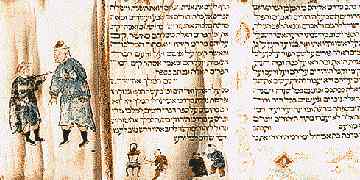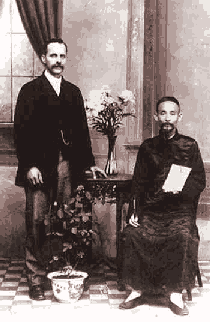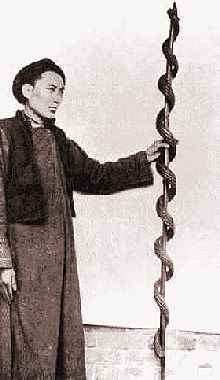

In the book Isaiah we find the Hebrew name Sinim. Sin is Hebrew name for China. And the inhabitants (Chinesare called "Sinim". The verse reads:
these from the land of Sinim. Shout O Heavens and rejoice O earth, for Adonai has comforted his people. And has taken back His afflicted ones in love." |
In fortlike villages
in the high mountain ranges on the Chinese-Tibetan border live the
Chiang-Min of Szechuan. According to the Scottish missionary, Reverend
Thomas Torrance, who visited Chengdu in 1918, the Chiang-Min are
descendants of the ancient Israelites who arrived in China several
hundred years before the common era.
Torrance issued several publications in the 1920s on the subject of the customs and religion of the Chiang, and in 1937 produced his work China’s First Missionaries: Ancient Israelites – a culmination of his ideas concerning the origins and life of the Chiang-Min. Torrance notes that the Chiang-Min "...retain unquestionable marks of being members of the Israelitish branch of the Semitic race..." among them unmistakable Semitic features. He finds many customs common to ancient Israelite religion. The Chiang-Min believe in one God and serve the Abbah Molan, reminiscent of the Israelite Malach or messenger of God (angel). "In times of calamity or acute distress, the people have a moan or cry of a ‘Yawei’ sound - very suggestive...of the Biblical name of G'd." |
 |
 |
The Chiang conception of sacrifice,
too, according to Torrance, came from the ancient Israelites. The
plough used by the Chiang is similar to the ancient Israelite plough
and is drawn by two oxen, this in accordance with the stipulation
in Deut. 22:10: "You shall not plough with an ox and ass together." Chiang-Min
priests, like the ancient Israelite priests wear girdles to bind
their robes, and bear a sacred rod shaped like a serpent, reminiscent
of the Biblical Nehushtan (the brass serpent made by Moses: Numbers
21:9; II Kings 18:4).
There are Jews who established communities in various parts of China, chiefly in Kaifeng, who probably arrived in the region in the 10th-11th centuries as traders via the "Silk Route." |
